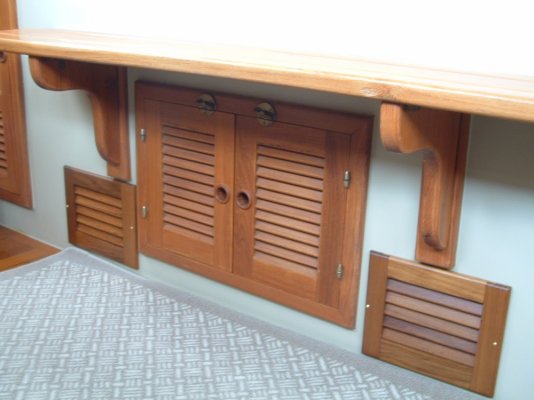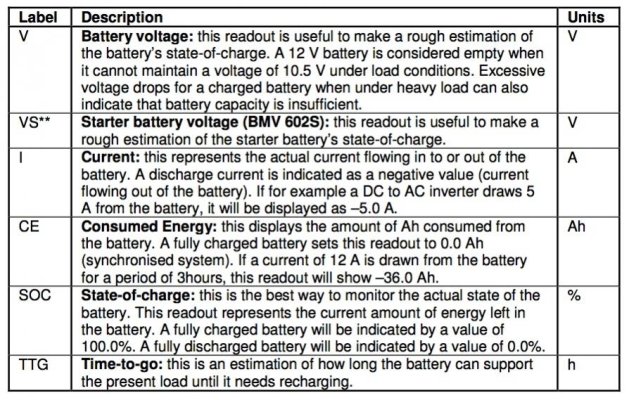JDCAVE
Guru
- Joined
- Apr 3, 2011
- Messages
- 2,902
- Location
- Canada
- Vessel Name
- Phoenix Hunter
- Vessel Make
- Kadey Krogen 42 (1985)
Electronics was not my strong suite in high school and I managed to avoid it throughout university. However I am the new owner of a 1985 Kadey Krogen 42 and find myself somewhat overwhelmed with the electrical system and it seems to be a steep learning curve.
First off, the previous owner was quite savvy concerning electronics. Everything seems to be working very well. The wiring in the helm has been completely redone and is very tidy and handsome. Others have remarked on what a wonderful job he did. Anyways I need some direction on how to upgrade my knowledge. If someone has a particular book that is helpful at the novice level, but at the same time thorough, please provide me the title. The following systems are on the boat:
Starting bank: (2) Trojan 105 6V wet
House bank (10) Trojan 105 6V wet
Shore Power: (2) 30A 125V
Freedom Marine 20 100 amp charger for house and start, Echo charger or Victron Centaur 12-40 for thruster bank, and ProSport 6 for generator start
Generator: Entec West 4200W, 115VAC, diesel fired, fresh water cooled, water lift muffler system 24 hours
Heart Interface, Link 2000
1 X Balmar Digital Duo charge
1 X Balmar Max Charge MC-612 multi stage marine regulator.
Freedom Marine 20 100 amp charger.
Engine alternator: Amptech S125E, single belt.
The mechanic I hired on survey remarked that the charging and wiring systems had been done well and he particularly drew my attention to the two Balmar gadgets, saying this was a very good setup.
I am checking the fluid levels in the batteries and adding distilled water as required with one of those battery fillers. I also tested all the cells in all the Trojan batteries with a battery hydrometer. One cell in each of two batteries in the house bank were poor based on the hydrometer. We have never yet run out of power during 2 days on the hook and everything seems fine based on my systems check with the Link monitor. However the batteries for the house bank are at least 6 years old now.
The generator runs well and has only 30 hours on it.
I find that the charging system runs for quite a while when I plug into shore power, even after a 4 hour run with the main engine. Is this normal?
I apologize in advance if this has been covered in other posts, however from what I have read, there are different views out there on this subject.
Jim
First off, the previous owner was quite savvy concerning electronics. Everything seems to be working very well. The wiring in the helm has been completely redone and is very tidy and handsome. Others have remarked on what a wonderful job he did. Anyways I need some direction on how to upgrade my knowledge. If someone has a particular book that is helpful at the novice level, but at the same time thorough, please provide me the title. The following systems are on the boat:
Starting bank: (2) Trojan 105 6V wet
House bank (10) Trojan 105 6V wet
Shore Power: (2) 30A 125V
Freedom Marine 20 100 amp charger for house and start, Echo charger or Victron Centaur 12-40 for thruster bank, and ProSport 6 for generator start
Generator: Entec West 4200W, 115VAC, diesel fired, fresh water cooled, water lift muffler system 24 hours
Heart Interface, Link 2000
1 X Balmar Digital Duo charge
1 X Balmar Max Charge MC-612 multi stage marine regulator.
Freedom Marine 20 100 amp charger.
Engine alternator: Amptech S125E, single belt.
The mechanic I hired on survey remarked that the charging and wiring systems had been done well and he particularly drew my attention to the two Balmar gadgets, saying this was a very good setup.
I am checking the fluid levels in the batteries and adding distilled water as required with one of those battery fillers. I also tested all the cells in all the Trojan batteries with a battery hydrometer. One cell in each of two batteries in the house bank were poor based on the hydrometer. We have never yet run out of power during 2 days on the hook and everything seems fine based on my systems check with the Link monitor. However the batteries for the house bank are at least 6 years old now.
The generator runs well and has only 30 hours on it.
I find that the charging system runs for quite a while when I plug into shore power, even after a 4 hour run with the main engine. Is this normal?
I apologize in advance if this has been covered in other posts, however from what I have read, there are different views out there on this subject.
Jim
Last edited:





